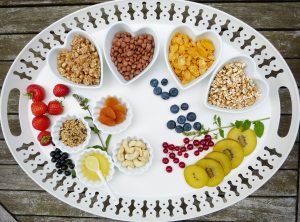In the evolution of time, with the advancement of technology, there has been an improvement from women’s hairdressing materials to cooking utensils. At one time, earthenware was the only recourse for cooking utensils. People could not imagine cooking without earthenware. Now in the modern era, civilization has improved. People have learned to use different metals in cooking. Aluminum is one of those metals which we will show how Aluminum cookware is your best option.
Nowadays, we see a lot of use of aluminum metal all around. Especially the cooking utensils of Aluminum is an appropriate choice for the cooks even just to reheat food. But before using anything, there is a particular need to be aware of its pros and cons. Where health risks are spoken of, in this article, we hope to make a special effort to clarify regarding the best-anodized cookware.
There is no suspicion that slight weight aluminum is an outstanding conductive metal, but it is also highly side
Effects with acetous foods such as vinegar, tomatoes, and citrus. Heating these foods in aluminum vessels can ruin the taste and appearance of the food and cause the pot’s surface to become hollow. Cooked in aluminum cooking utensils, we feel the weak metallic flavor in tomato sauce and lemon yogurt on our tongues. However, the rate of Aluminum come in the food is minimal.
Laboratory experiments showed that the tomato ketchup heated in an aluminum container for a couple of hours and stored overnight in the corresponding container showed only .0025 mg of Aluminum through the cup. According to most medical associations, some science editors report that using aluminum cookware does not pose a health risk.
Table of Contents
How much Aluminum leaches into food from cookware?
According to a study, 5 ml of Aluminum per kg of food is six times SRL (the specific release limit) set by the European society released from Aluminum Cookware. From another research, researchers noticed that cooking in an aluminum pan with edible oil and drinking water did not cause as much leaching of SRL as acidic solutions.
In reality, a thin 0.5% citric acid liquid surpasses an intense 638 milligram per liter, indicating that TWI (tolerable weekly intake) of Aluminum for a kid scaling 15 kg will excel 298 percent (and its volume is. 83.6 percent) to 70 kg. For an overweight adult, TWI contains 10 ml of lemon juice daily for one week.
Pros and Cons of aluminum cookware
Some advantages of aluminum cookware:
Aluminum is a readily obtainable metal that is found in abundance around us. And that’s why kitchenware made of this metal is cheaper than steel or ceramic.
So far, we know aluminum cooking ware is usually light in weight. So large aluminum pots and other commercial catering material made from Aluminum are very easy to operate and carry. Also, the aluminum equipment is a durable material as long as it is well maintained.
An aluminum cooking wire is a perfect heat conductor. That is why it heats up quickly, and if it is relatively dense, it will heat up evenly. An aluminum pan is ready for cooking in moments for the thermal conductive properties.
Some disadvantages of aluminum cookware:
- Aluminum is a very soft metal, so it is not as durable as stainless steel.
- studies have shown that aluminum cookware users have a higher risk of developing Alzheimer’s disease.
- aluminum cookware can stain when cooked with acidic foods, especially vinegar.
- aluminum cookware has a much higher deformation rate if it is placed under cold water while the temperature is hot from the gas range. If you are worried about your aluminum cookware presence, my advice is to invest in cookware made of stainless steel or ceramic.
What is anodized aluminum cookware?
Anodized aluminum cookware is chemically bonded with oxygen to get it harder, sleeker, and better cooked. The outside of aluminum bonds forms a layer of aluminum oxide with oxygen in an electrochemical process.
Pros and Cons of Anodized cookware
Stainless steel is thirty percent weaker than the anodized Aluminum. As a result, it is opposing to rubbing and decay. The anodization method makes Aluminum much less porous. Moreover, anodized aluminum cookware is also easy to wash, and anodized Aluminum is not responsive as opposed to regular Aluminum. That means it doesn’t leak weighty metals in your diet.
Anodized Aluminum is not poisonous and highly heat resistant. These kinds of cookware can be durable but not guaranteed and can break in an instant. Cooking acetic food in an aluminum pan quickens this breakdown. So it is better to avoid acid cleansing products like vinegar.
The bottom line
Some housewives choose carbonized steel, cast iron, and stainless steel as their cooking utensils for the advantages of anodized Aluminum. And someone wants ceramic and crystal as ovenware. Gratitude indeed to their comparative lasting, which causes them naturally extra eco-friendly. You can find more information about this, for example, on a food blog like Jikonitaste.




